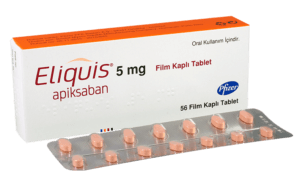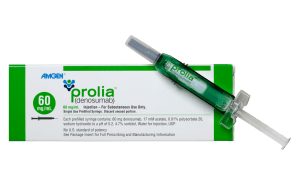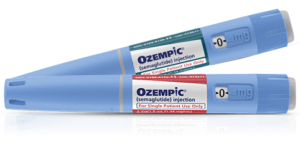
Why is DVT education important?
Research shows that around 600,000 people are hospitalized annually due to DVT. In the U.S., pulmonary embolism (PE), a complication of DVT, causes more deaths than breast cancer, AIDS, and car accidents combined.
Pulmonary embolism is believed to be one of the most preventable outcomes in hospitals. Up to 60% of patients who have total hip replacement surgery could develop DVT unless they receive preventative treatment. Cancer patients undergoing surgery are at even higher risk, with at least double the risk of developing DVT and over three times the risk of developing blood clots and fatal PE compared to non-cancer patients undergoing similar procedures.
Women face additional risks; pregnancy increases the chance of developing venous thromboembolism (VTE) by six times, and PE is the leading cause of death related to childbirth. Pulmonary embolism (PE) is a serious complication of venous thromboembolism (VTE). VTE includes both deep vein thrombosis (DVT), where blood clots form in veins (usually in the legs), and PE, which occurs when a clot breaks off and travels to the lungs, causing a potentially life-threatening blockage.
Knowing the symptoms of DVT so it can be treated before it turns into a pulmonary embolism is the main reason why DVT education is so important.
About deep vein thrombosis

The calf muscles help the movement of blood through the veins in the legs. When these muscles tighten, they squeeze the veins and push the blood upward toward the heart, working against gravity. Valves play an important role by keeping the blood flowing in the right direction.
Deep vein thrombosis occurs when something blocks or slows blood flow in the deep veins of the legs. Common causes include injuries, surgeries, or not moving for long periods of time.
A blood clot in a deep vein can sometimes break free and move to the lungs, where it may get stuck in a blood vessel. This is called a pulmonary embolism. If the clot is big, it can completely block blood flow and, in severe cases, may lead to death.
Another outcome of DVT can be the development of Post-Thrombotic Syndrome (PTS). In this case, chronic local pain, swelling, and skin changes are due to long-term vein damage from a DVT.
When should I contact a doctor if I suspect I have a DVT?
Patients should contact their doctor immediately if they notice deep vein thrombosis symptoms. If someone experiences chest pain, difficulty breathing, or signs of a stroke or heart attack, they should call 911 and request an ambulance immediately.
DVT symptoms usually appear in one leg, though both legs can be affected in rare cases. Common signs include throbbing, cramping, pain, and tenderness, often in the calf or thigh. Pain may occur when the foot is extended, and swelling can develop in the lower leg, ankle, or foot. The skin may feel warm to the touch and may change color, appearing red, pale, or blue. These symptoms can also occur in the arm or abdomen if the blood clot is located there.
Blood clotting and DVT
Blood has platelets and substances known as clotting factors. Platelets are sticky and help the blood clot, which plays a part in the body’s process of healing wounds. When someone gets a cut or scratch, platelets gather at the injury. Working with clotting factors triggered by contact with the air, they form a mesh-like structure that traps more platelets and creates a plug to close the wound. Blood clotting is important for staying alive, but blocking blood flow can lead to serious issues.
Risk factors for DVT
Deep vein thrombosis is more likely to occur in people who:
- Have heart disease
- Are over 40 years old
- Are obese
- Smoke
- Have had a DVT before or have a family history of blood clots or strokes at a young age
- Use birth control pills or hormone replacement therapy
- Have cancer or heart failure
- Have varicose veins
- Have a condition that affects their blood’s clotting.
Some temporary situations can also increase the risk of DVT, such as:
- Recovering from major surgery
- Having an injury like a broken bone, spinal cord injury, or muscle injury
- Being confined to bed or unable to move for long periods
- Taking a long trip by plane, car, or train that restricts movement
- Being pregnant or having recently given birth
- Being dehydrated
- Having an infection.
However, in some cases, DVT can develop without any apparent cause.
Long-distance travel and DVT
Traveling long distances by air, car, or train for more than four hours can increase the risk of developing deep vein thrombosis in people who are more susceptible. To lower the chances of DVT during long trips, it’s recommended to:
- Wear loose, comfortable clothing
- Stay hydrated by drinking plenty of water
- Avoid crossing your legs while sitting
- Move around as much as possible before, during, and after the trip
- Stretch your legs and feet every couple of hours to keep your calf muscles active
- Avoid smoking and drinking alcohol.
For individuals with DVT risk factors, consulting a doctor before traveling is essential. In some cases, wearing compression stockings may be helpful, but a doctor can advise on whether this option is appropriate. People taking blood-thinning medicine, like anticoagulants, should carefully follow their doctor’s advice while traveling.
How is DVT diagnosed?
Getting medical attention quickly is crucial if someone suspects they have a DVT. If a doctor suspects a DVT, the patient will likely be sent for an ultrasound within 24 hours. This test checks whether blood is flowing properly through the veins or if there is a blockage. In some cases, an X-ray called a venogram might be done. This involves injecting dye into the foot and taking X-rays of the leg veins to look for any blockages.
What is the treatment for DVT?

Managing risk factors is key to preventing more blood clots from forming after a DVT is diagnosed. Patients should consult their doctor about ways to lower their risk. Quitting smoking and keeping a healthy weight can also help reduce the chances of developing DVT.
Doctors may also recommend a test for antiphospholipid syndrome, a blood disorder that increases the risk of blood clots.
Complications of DVT
Untreated DVT can lead to serious problems like swollen or inflamed veins (phlebitis) or open sores on the leg.
The most serious risk of deep vein thrombosis is a pulmonary embolism. This occurs when a blood clot breaks loose from a vein and travels to the lungs. Once in the lungs, the clot can block a main blood vessel or one of its larger branches. This blockage cuts off blood and oxygen to the lung tissue, which can cause cell death.
FAQs
Can you prevent blood clots?
To lower the risk of blood clots, it’s important to reduce as many risk factors as possible, like quitting smoking. Staying active and getting regular exercise can help. If walking isn’t an option, moving your legs, ankles, and feet frequently is recommended. If in the hospital, patients can ask nurses or physical therapists for advice. Drinking plenty of fluids is also important to prevent dehydration unless instructed otherwise by a doctor.
Is exercise good for DVT?
Research shows that exercise can help reduce common symptoms of deep vein thrombosis, such as swelling, pain, and redness. Staying active can also boost energy levels. For individuals who have suffered a DVT, physical activity is especially important to maintain healthy blood flow in the legs, where blood clots are most likely to develop.
Where does DVT usually start?
Blood clots usually form in the legs and can move through the heart to the lungs. They can also start in other parts of the body, but it is not as common.















